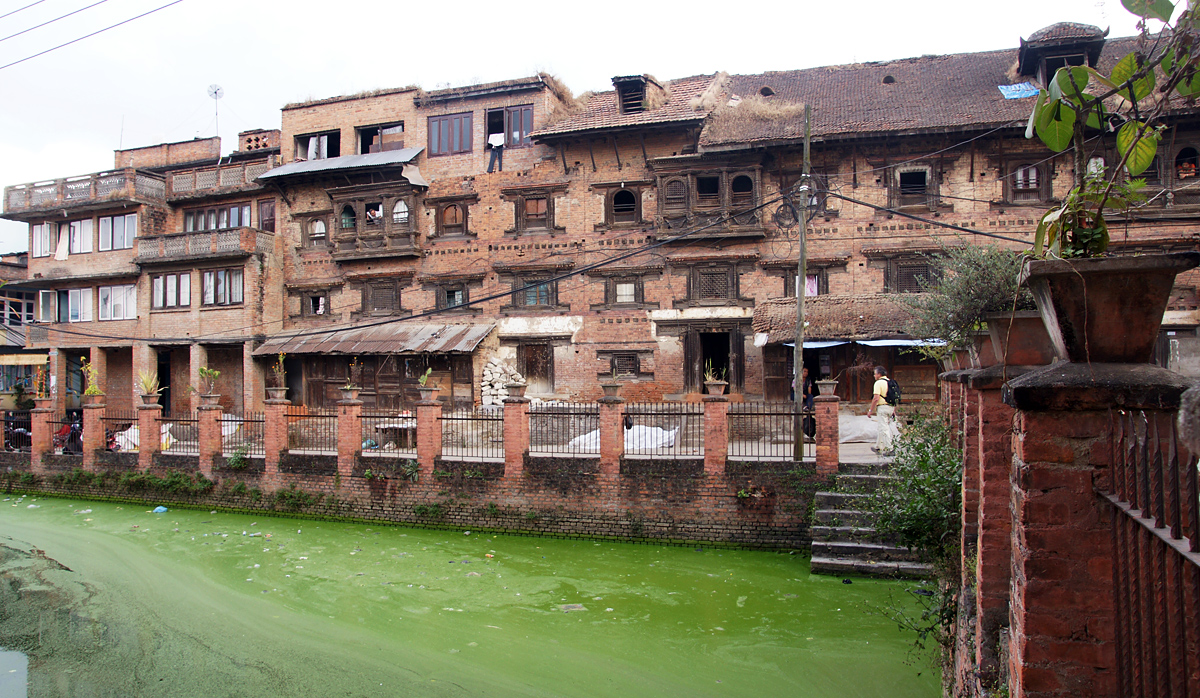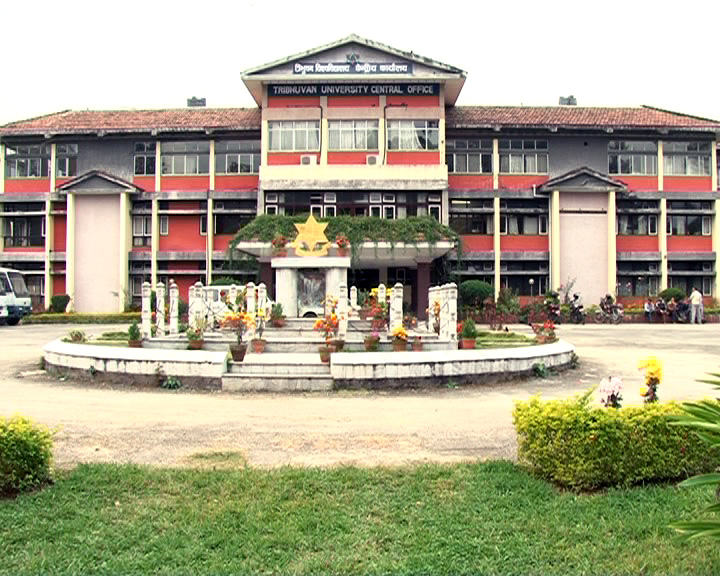|
Panga, Kirtipur
Panga ( ne, पाँगा) is a typical Newari settlement and part of Kirtipur Municipality. Kirtipur is one of the five municipalities in the valley i.e.; Kirtipur Municipality, the others being Kathmandu, Lalitpur, Bhaktapur and Madhyapur Thimi. It is the small city surrounded by Chovar Hill, Kirtipur Hill and Machhegaon Hill. Etymology The name Panga comes from ''Pa'' (to guard) and ''Gä'' (Village or city). Later on changed to "Panga". Demographics Originally a Newar foundation, Panga is still a center of Newar culture. It has been merged with surrounding villages to form the municipality of Kirtipur with a population of 65,602. It consists of many temples, ''Vihars'' (Buddhist monastery) and churches too. Due to the presence of Tribhuvan University Tribhuvan University (TU; ne, त्रिभुवन विश्वविद्यालय) is a public university located in Kirtipur, Kathmandu. Established in 1959, TU is the oldest university in Nepal. In t ... [...More Info...] [...Related Items...] OR: [Wikipedia] [Google] [Baidu] |
Municipality
A municipality is usually a single administrative division having corporate status and powers of self-government or jurisdiction as granted by national and regional laws to which it is subordinate. The term ''municipality'' may also mean the governing body of a given municipality. A municipality is a general-purpose administrative subdivision, as opposed to a special-purpose district. The term is derived from French and Latin . The English word ''municipality'' derives from the Latin social contract (derived from a word meaning "duty holders"), referring to the Latin communities that supplied Rome with troops in exchange for their own incorporation into the Roman state (granting Roman citizenship to the inhabitants) while permitting the communities to retain their own local governments (a limited autonomy). A municipality can be any political jurisdiction, from a sovereign state such as the Principality of Monaco, to a small village such as West Hampton Dunes, New York. Th ... [...More Info...] [...Related Items...] OR: [Wikipedia] [Google] [Baidu] |
Provinces Of Nepal
The provinces of Nepal ( ne, नेपालका प्रदेशहरू, translit=Nepālkā Pradeśharū) were formed on 20 September 2015 in accordance with Schedule 4 of the Constitution of Nepal. The seven provinces were formed by grouping the existing List of districts in Nepal, districts. The current system of seven provinces replaced an earlier system where Nepal was divided into 14 List of zones of Nepal, administrative zones which were grouped into five Development regions of Nepal, development regions. History A committee was formed to restructure administrative divisions of Nepal on 23 December 1956 and in two weeks, a report was submitted to the government. In accordance with The ''Report On Reconstruction Of Districts Of Nepal, 2013'' (), the country was first divided into total 7 ''Kshetras'' (area). # (Unnamed) # Madesh Kshetra # Bagmati Kshetra # Gandaki Kshetra # Lumbini Kshetra # Karnali Kshetra # Mahakali Kshetra In 1962, all ''Kshetras'' were dissolv ... [...More Info...] [...Related Items...] OR: [Wikipedia] [Google] [Baidu] |
Bagmati Province
Bagmati Province ( ne, बाग्मती प्रदेश, ''Bagmati Pradesh'') is one of the seven provinces of Nepal established by the constitution of Nepal. The province is Nepal's second-most populous province and fifth largest province by area. Bagmati is bordered by Tibet Autonomous Region of China to the north, Gandaki Province to the west, Province No. 1 to the east, Madhesh Province and the Indian state of Bihar to the south. With Hetauda as its provincial headquarters, the province is also the home to the country's capital Kathmandu, is mostly hilly and mountainous, and hosts mountain peaks including Gaurishankar, Langtang, Jugal, and Ganesh. Being the most populous province of Nepal, it possesses rich cultural diversity with resident communities and castes including Newar, Tamang, Madhesis, Sherpa, Tharu, Chepang, Jirel, Brahmin, Chhetri , Marwari and more. It hosted the highest number of voters in the last election for the House of Representatives and Prov ... [...More Info...] [...Related Items...] OR: [Wikipedia] [Google] [Baidu] |
Districts Of Nepal
Districts in Nepal are second level of administrative divisions after provinces. Districts are subdivided in municipalities and rural municipalities. There are seven provinces and 77 districts in Nepal. After the state's reconstruction of administrative divisions, Nawalparasi District and Rukum District were divided into Parasi District (officially Nawalparasi (West of Bardaghat Susta) District) and Nawalpur District (officially Nawalparasi (East of Bardaghat Susta) District), and Eastern Rukum District and Western Rukum District respectively. District official include: * Chief District Officer, an official under Ministry of Home Affairs is appointed by the government as the highest administrative officer in a district. The C.D.O is responsible for proper inspection of all the departments in a district such as health, education, security and all other government offices. * District Coordination Committee acts as an executive to the District Assembly. The DCC coordinates with ... [...More Info...] [...Related Items...] OR: [Wikipedia] [Google] [Baidu] |
Kathmandu District
Kathmandu District ( ne, काठमाडौं जिल्ला; Nepal Bhasa: ये: जिल्ला) is a district located in Kathmandu Valley, Bagmati Province of Nepal. It is one of the 77 districts of Nepal, covers an area of , and is the most densely populated district of Nepal with 1,081,845 inhabitants in 2001, 1,744,240 in 2011 and 2,017,532 in 2021. The administrative headquarters of Kathmandu district is located in Kathmandu. Geography Kathmandu district is one of the three districts located in Kathmandu Valley, which itself is located in the hills of Bagmati Province. The district is located from 27°27′E to 27°49′E longitude and 85°10′N to 85°32′N latitude. The district is surrounded by: *East: Bhaktapur District and Kavrepalanchok District *West: Dhading District and Nuwakot District *North: Nuwakot District and Sindhupalchok District *South: Lalitpur District and Makwanpur District The altitude of the district ranges from t ... [...More Info...] [...Related Items...] OR: [Wikipedia] [Google] [Baidu] |
Nepal Time
Nepal Standard Time (NPT) is the time zone for Nepal. With a time offset from Coordinated Universal Time (UTC) of UTC+05:45 all over Nepal, it is one of only three time zones with a 45-minute offset from UTC.The others are Chatham Island Standard Time, with an offset of UTC+12:45, and the unofficial Australian Central Western Time, with an offset of UTC+08:45. NPT is an approximation of Kathmandu mean time, which is 5:41:16 ahead of UTC. The standard meridian passes through the peak of Gaurishankar mountain about east of Kathmandu. Nepal used local solar time until 1920, in Kathmandu UTC+05:41:16. In 1920, Nepal adopted Indian Standard Time, UTC+05:30. In 1986 Nepal advanced their clocks by 15 minutes, giving them a time zone of UTC+05:45. See also *Date and time notation in Nepal Nepal uses both the DMY and YMD format when writing dates, and uses 12-hour format for time. Date YYYY-MM-DD is official date format for the Bikram Sambat calendar used in Nep ... [...More Info...] [...Related Items...] OR: [Wikipedia] [Google] [Baidu] |
Newar
Newar (; new, नेवार, endonym: Newa; new, नेवा, Pracalit script:) or Nepami, are the historical inhabitants of the Kathmandu Valley and its surrounding areas in Nepal and the creators of its historic heritage and civilisation. Page 15. Newars form a linguistic and cultural community of primarily Indo-Aryan and Tibeto-Burman ethnicities following Hinduism and Buddhism with Nepal Bhasa as their common language. Newars have developed a division of labour and a sophisticated urban civilisation not seen elsewhere in the Himalayan foothills. Newars have continued their age-old traditions and practices and pride themselves as the true custodians of the religion, culture and civilisation of Nepal. Newars are known for their contributions to culture, art and literature, trade, agriculture and cuisine. Today, they consistently rank as the most economically and socially advanced community of Nepal, according to the annual Human Development Index published by UNDP. Nep ... [...More Info...] [...Related Items...] OR: [Wikipedia] [Google] [Baidu] |
Kirtipur
Kirtipur (Nepal Bhasa: किपू ''Kipoo'') is a Municipality and an ancient city of Nepal. The Newars are the natives of Kipoo (Kirtipur) that is believed to be derived from Kirati King Yalamber. It is located in the Kathmandu Valley 5 km south-west of the city of Kathmandu. It is one of the five municipalities in the valley, the others being Kathmandu, Lalitpur, Bhaktapur and Madhyapur Thimi. It is one of the most famous and religious places to visit. Many people visit this place not only for its natural environment but also to visit temples. The city was listed as a UNESCO tentative site in 2008. Etymology The name Kirtipur comes from the Sanskrit terms ''Kirti'' (glory) and ''pur'' (city) as well as Kirat Kingdom of Yalamber's dynasty. The colloquial term used for the city is Kipoo . Demographics Originally a Newar foundation, Kirtipur is still a center of Newar culture. It has been merged with surrounding villages to form the municipality of Kirtipur with a populatio ... [...More Info...] [...Related Items...] OR: [Wikipedia] [Google] [Baidu] |
Tribhuvan University
Tribhuvan University (TU; ne, त्रिभुवन विश्वविद्यालय) is a public university located in Kirtipur, Kathmandu. Established in 1959, TU is the oldest university in Nepal. In terms of enrollment, it is the 12th largest university in the world. The college offers 1000 undergraduate and 500 postgraduate programs across a wide range of disciplines. Additionally, the institution has 30 constituent campuses and over 600 affiliated colleges across the country. Because it is government-funded, the tuition fees are less expensive than those of private (affiliated) college campuses. History Established on 25 June 1959 (or 11 Ashar 2016 BS), Tribhuvan University is the oldest and largest university in Nepal. The university was named after the late King Tribhuvan. In its early years, all the postgraduate classes were held at Tripureshwor Campus. The administrative office was also located in Tripureshwor. It was only in 1967 that the university was ... [...More Info...] [...Related Items...] OR: [Wikipedia] [Google] [Baidu] |



